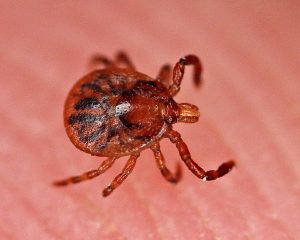 Ticks are a nuisance and because of their small size and painless bite, you may not realize that you have been bitten until it is too late. Ticks need to be attached between 12 to 24 hours before they transmit a disease. This means that regular checks for ticks and removing them quickly can help protect you from diseases. Here is a list of the most dangerous ticks in North Carolina.
Ticks are a nuisance and because of their small size and painless bite, you may not realize that you have been bitten until it is too late. Ticks need to be attached between 12 to 24 hours before they transmit a disease. This means that regular checks for ticks and removing them quickly can help protect you from diseases. Here is a list of the most dangerous ticks in North Carolina.
Dog Ticks
According to WRAL, the most dangerous tick is the dog tick. It is main carrier of Rocky Mountain spotted fever. This disease can cause a fever and achy muscles. A few days after onset, a spotted rash will appear on the ankles and wrists. It will continue to spread if not treated. Rocky Mountain spotted fever needs to be treated with antibiotics so if you have symptoms, you should seek medical attention. North Carolina often has the highest number of reported cases of Rocky Mountain spotted fever each year.
Blacklegged Ticks
Blacklegged ticks are another serious threat to residents of North Carolina. Blacklegged ticks carry Lyme disease, Powassan disease and babesiosis. Lyme disease often begins with a bull’s eye rash and aches and pains. It will not clear up without treatment and it is important to seek medical attention if you develop these symptoms after a tick bite. Powassan virus is more common in the Northeast, and symptoms include headache, fever and confusion.
Lone Star Ticks
Lone Star ticks carry a number of diseases including tularemia and STARI. The symptoms of tularemia depend on the way that you contract it, if you catch it from a tick bite you may have skin ulcer where the bite was as well as swollen glands. STARI is a disease that causes fever, headache and a rash. It can be treated with antibiotics. A bite from the Lone Star tick may also cause the victim to develop allergies to meat. The symptoms may take a few months to develop and usually result in a stomach ache and will worsen each time the patient eats meet. It usually starts with beef and venison, and overtime, there may also be allergies to poultry.
Comments
Post a Comment